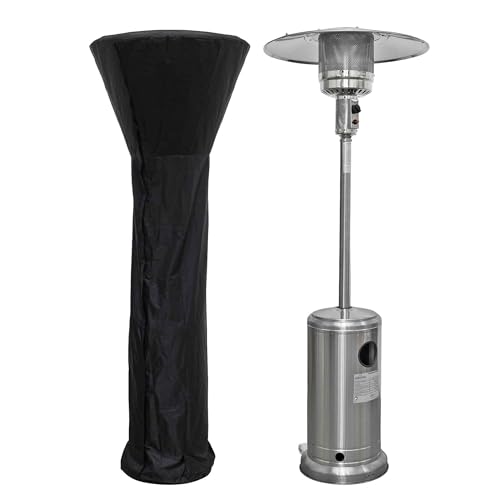It's A Buy Gas Radiant Heaters Success Story You'll Never Remember

Buying Gas Radiant Heaters: A Comprehensive Guide
Gas radiant heaters have actually gotten appeal in the last few years for their efficiency and capability to offer instant heat. As more homeowners and organizations try to find methods to keep their spaces comfy, comprehending the functions, advantages, and considerations when purchasing these heating units can be extremely helpful. Buy Gas Radiant Heaters digs into the complexities of gas radiant heaters, aiding prospective purchasers in making informed decisions.
What are Gas Radiant Heaters?
Gas radiant heaters are devices that utilize propane or gas to produce heat directly into a space. Rather than heating Contemporary Patio Heaters , they warm things and individuals in their area, providing comfort faster and effectively. These heaters are popular for both indoor and outdoor settings due to their flexibility and efficiency.
Secret Features of Gas Radiant Heaters
- Direct Heating: Unlike conventional heaters that warm the air, gas radiant heaters provide direct heat, making them an efficient choice for quickly warming up spaces.
- Portability: Many designs are readily available as portable systems, allowing them to be easily moved from one location to another.
- Fuel Variety: Gas radiant heaters can be powered by gas or propane, offering users flexibility based on accessibility and preference.
- Adjustable Settings: Most gas radiant heaters come with adjustable heat settings, permitting users to customize the level of heat based on their needs.
Advantages of Gas Radiant Heaters
- Energy Efficiency: These heaters transform gas into heat effectively, resulting in lower utility expenses compared to electric heaters.
- Quick Heating: Radiant heat is felt nearly instantly, making these heaters ideal for abrupt temperature level drops.
- Low Maintenance: Gas radiant heaters usually need less upkeep than electric models, making them a hassle-free choice.
- Eco-friendly: When powered by tidy gas, these heaters can be a more ecologically sustainable option compared to other heating approaches.
Types of Gas Radiant Heaters
When it pertains to choosing a gas radiant heater, it's necessary to understand the various types offered. Below are the most typical options:
- Indoor Gas Radiant Heaters: Designed for indoor areas, these heaters are typically vented or unvented and often featured built-in safety functions.
- Outdoor Gas Radiant Heaters: Commonly utilized in outdoor patios or outdoor dining locations, these heaters are designed to withstand the components.
- Wall-Mounted Gas Radiant Heaters: A space-saving alternative, these systems are ideal for smaller areas and can be equipped with different heat outputs depending upon the area's requirements.
- Freestanding Gas Radiant Heaters: These portable models can be utilized in various places, best for those who need versatility.
Purchasing Guide: How to Choose the Right Gas Radiant Heater
When buying a gas radiant heater, several factors need to be considered to ensure you choose the best design for your space:
1. Heating Capacity
- Determined in BTUs (British Thermal Units), the heater's capacity determines just how much area it can effectively warm. Buyers need to evaluate their particular needs based upon space size.
| Space Size (sq ft) | Recommended BTUs (for Gas Radiant Heaters) |
|---|---|
| 100 - 200 | 5,000 - 10,000 BTUs |
| 200 - 400 | 10,000 - 20,000 BTUs |
| 400 - 600 | 20,000 - 30,000 BTUs |
| 600 - 800 | 30,000+ BTUs |
2. Type of Gas
- Think about whether you will be using propane or natural gas, as various heaters accommodate various fuel types.
3. Safety Features
- Try to find models equipped with safety functions such as automatic shut-off valves, tip-over security, and oxygen depletion sensors.
4. Installation Requirements
- Some heaters might require professional installation, particularly vented designs. Make certain to consider the costs and requirements associated with setup.
5. Portability
- If versatility is necessary, think about portable designs that can be quickly moved from one area to another.
Setup and Maintenance
Gas radiant heaters are generally straightforward to install, especially portable models. However, vented options might require expert setup to guarantee they satisfy regional security codes.
Upkeep typically involves:
- Regular cleansing to prevent dust accumulation.
- Inspecting gas connections and fittings for leakages.
- Ensuring safety functions are functional.
Idea: Regular checks around the system can assist extend its life expectancy and keep security.
Frequently Asked Questions (FAQs)
Q1: Are gas radiant heaters safe for indoor use?A1: Yes
, as long as they are appropriately vented and equipped with essential safety features, they can be safely utilized inside.
Q2: Can gas radiant heaters be used in enclosed spaces?A2: Unvented gas heaters can present threats in enclosed spaces due to possible suffocation or carbon monoxide accumulation. Constantly ensure enough ventilation. Q3: How do I understand what size heater I need?A3: The appropriate size depends upon the location you plan to heat. Describe the BTU chart
above to identify your needs. Q4: What is the distinction in between propane and natural gas heaters?A4: The main difference depends on their energy source
; propane is delivered through tanks, while natural gas is usually piped into homes. Q5: How can I make the most of efficiency?A5: Ensure the heater is properly sized for your space, keep it regularly, and consider utilizing it in combination
with other heating techniques for optimum comfort. Gas radiant heaters can be a terrific addition to any home or business, providing energy-efficient and fast heating solutions. By comprehending the different types, functions, and factors to consider
when acquiring, buyers can make educated decisions that meet their heating needs. With the right option, these heaters supply convenience, dependability, and an inviting environment during chillier seasons.

